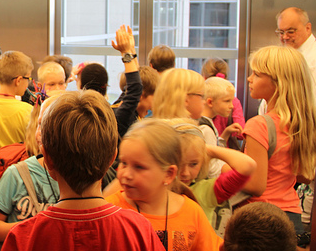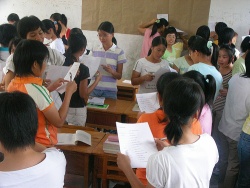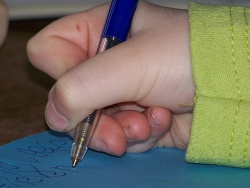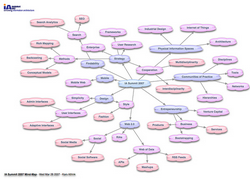Klassenspaziergang
Klassenspaziergang

Foto von Frank Tempel (abgerufen am 26.10.2012)
Kurzbeschreibung
Eine Kennenlernmethode, die durch ein vorgegebenes Thema geleitet wird.
Ablauf
Alle Kursteilnehmer/innen (TN) bekommen einen Auftrag (z.B. über ihr Heimatland zu berichten) oder zu unterschiedliche Fragen zu einem übergeordneten Thema (beim Thema Bildung z.B.: Wie funktioniert das Bildungssystem in deiner Heimat? Gibt es so eine Art Bafög bei euch? In wie vielen Klassen macht man das Abitur? etc.)
Die TN bekommen Zeit (z.B. 15 Minuten), mit möglichst vielen anderen zu sprechen.
Wenn sich die TN zu unterschiedlichen Teilaspekten befragt haben, sollten danach die Gesprächsergebnisse präsentiert werden. So kann der/die Kursleiter/in fragen, ob jemand etwas besonders Überraschendes erfahren hat. Alternativ kann jeder die für ihn interessanteste Information auf ein Plakat schreiben.
Benötigte Tools und Materialien
Gespräch
im Raum
Online: im Virtuellen Klassenzimmer, im Forum, im Chat
Präsentation der Informationen
Wandplakat
Online: Kooperatives Textsystem
Beispiele und Links
Der Klassenspaziergang eignet sich für Fächer, in denen viel diskutiert werden soll. So z.B. im Sprachenlernen. Hier ein Artikel zum Englisch-Lernen: https://www.fachportal-paedagogik.de/fis_bildung/suche/fis_set.html?FId=835817
Kommentare
Die Fragen könnten auch in Form eines Leittextes formuliert werden. Dieser könnte auf Papier den TN gegeben werden, um damit eine Orientierung für die Gespräche zu haben.











